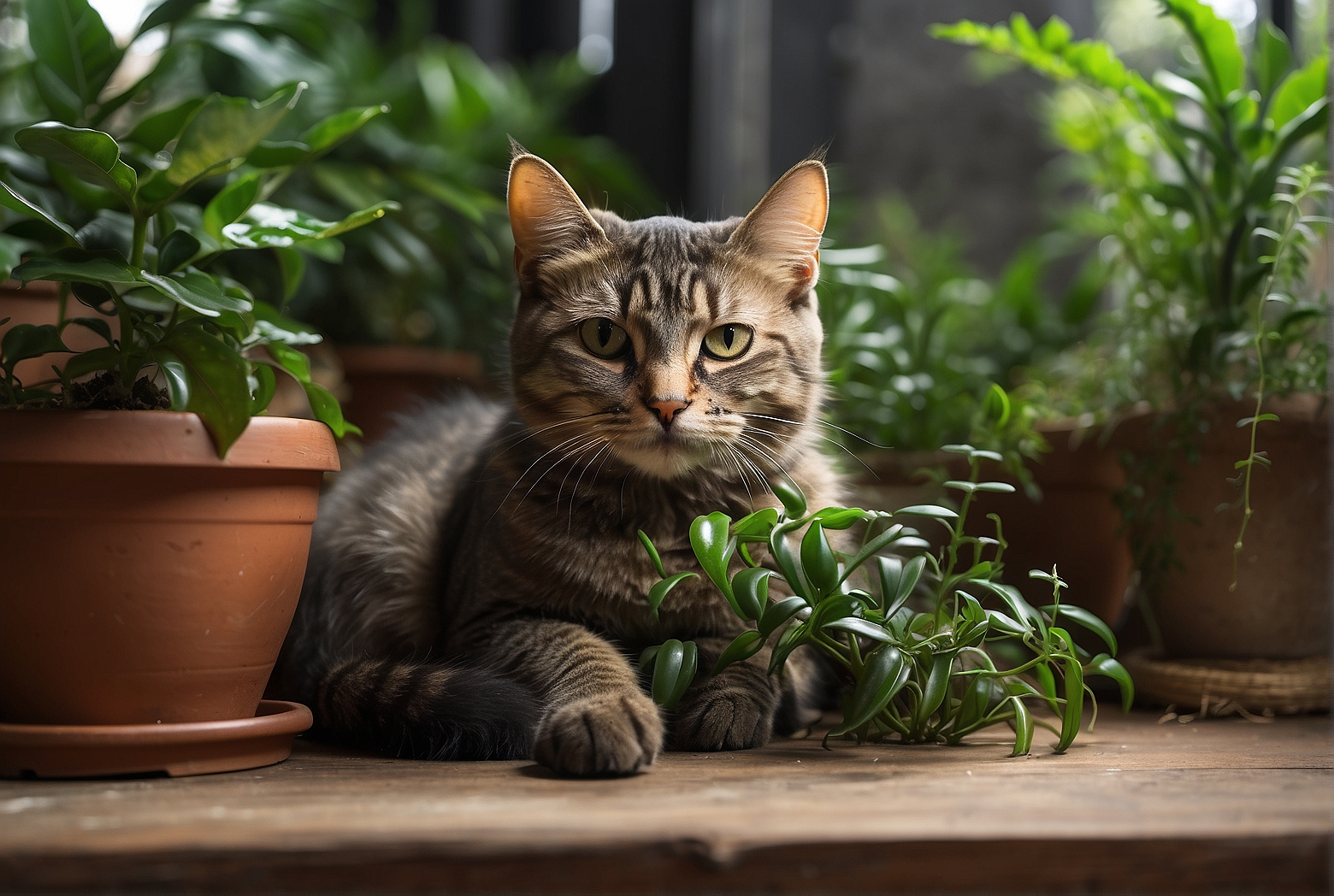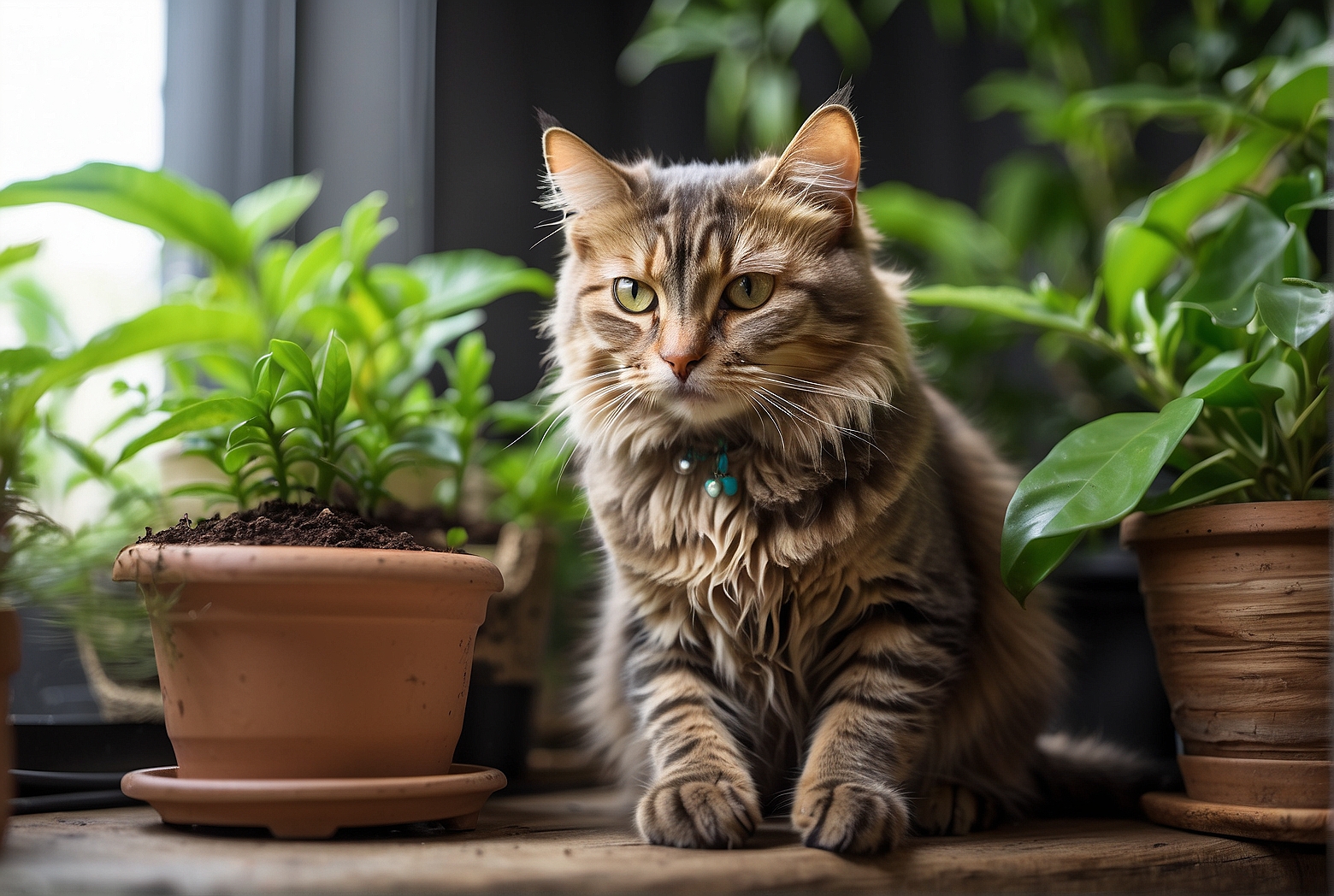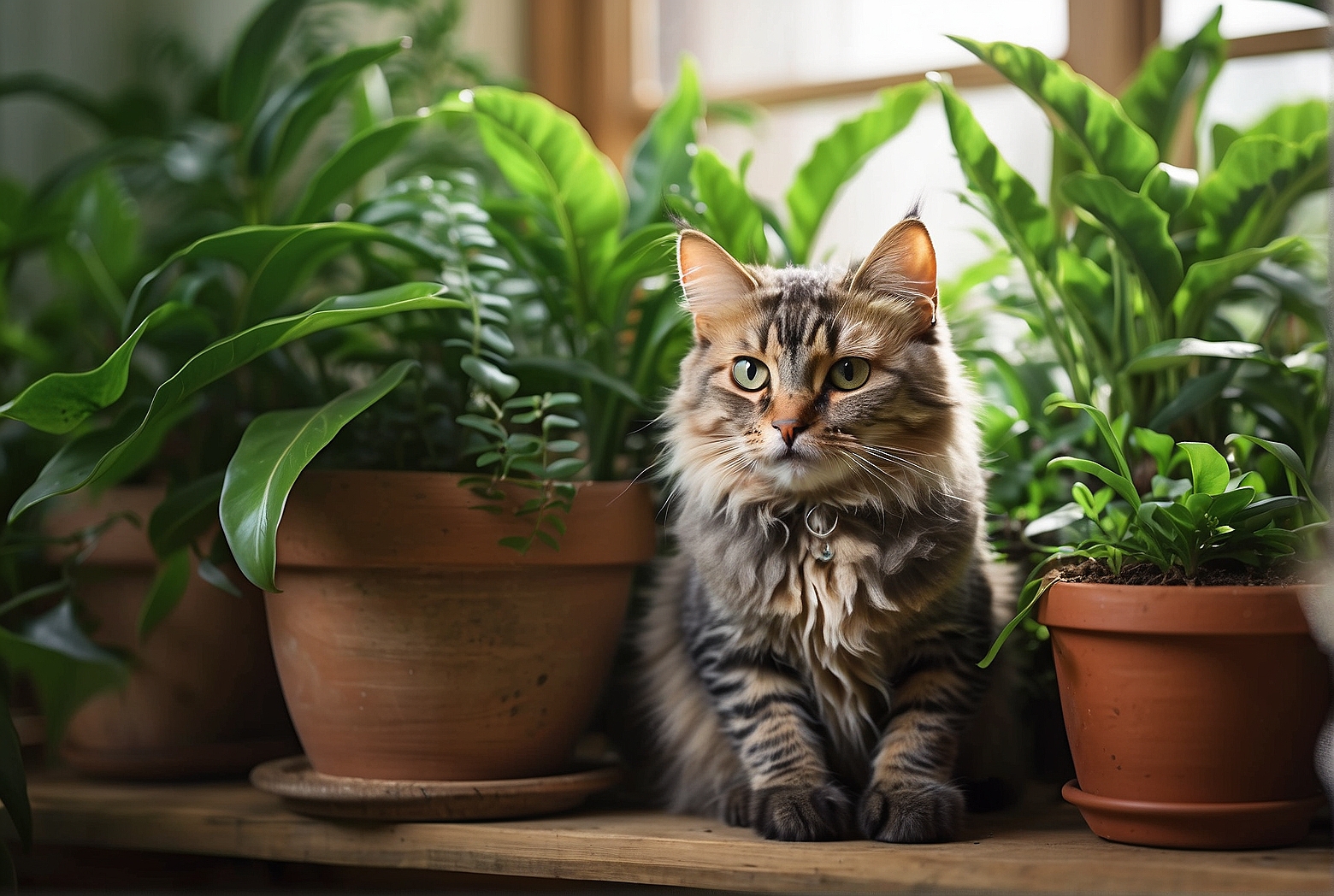Last Updated on March 30, 2024 by Tony Manhart
Have you ever wondered if ZZ plants are safe for your furry feline companion? In this article, we will explore whether ZZ plants pose any potential harm to cats. Many plant enthusiasts adore ZZ plants for their glossy green leaves and ability to thrive in low-light conditions, but it is crucial to ensure they won’t pose a threat to your precious pet. Let’s delve into the topic and find out if ZZ plants are toxic to cats.
Introduction
Understanding ZZ Plants
ZZ plants, scientifically known as Zamioculcas zamiifolia, are popular houseplants that are valued for their attractive foliage and low-maintenance care requirements. With their vibrant green leaves and ability to thrive in low light conditions, ZZ plants have become a common choice for many households. However, when it comes to the safety of our feline companions, it is essential to be aware of the potential toxicity that ZZ plants pose to cats.
Importance of Keeping Cats Safe from Toxic Plants
As responsible pet owners, ensuring the well-being of our furry friends is of utmost importance. Cats are curious creatures known for their investigative nature, often sniffing and nibbling on plants as part of their exploration. However, some plants contain toxic substances that can cause harm to cats when ingested. Understanding and preventing potential plant toxicity is crucial to safeguarding our beloved cats’ health and providing them with a safe environment to thrive in.
Potential Toxicity of ZZ Plants
Toxic Components of ZZ Plants
ZZ plants contain a toxic substance called calcium oxalate crystals. These crystals can cause irritation and injury when they come into contact with the delicate tissues of a cat’s mouth, tongue, and digestive system. The consumption of ZZ plant leaves or other plant parts can lead to adverse health effects in cats.

Symptoms of ZZ Plant Poisoning in Cats
If a cat ingests ZZ plants or comes into contact with the toxic plant material, various symptoms may manifest. These can include drooling, pawing at the mouth, vomiting, difficulty swallowing, oral irritation, and in severe cases, swelling or obstruction of the throat. It’s crucial to monitor your cat closely and seek veterinary assistance if you suspect ZZ plant poisoning.
Factors Influencing Toxicity
Cats’ Sensitivity to ZZ Plant Toxins
Different cats may exhibit varying degrees of sensitivity to ZZ plant toxins. Some cats may have a more intense reaction to the plant’s toxic compounds, while others may experience milder symptoms. Factors such as age, overall health, and individual tolerance levels can affect how a cat responds to ZZ plant toxicity.
Amount of Ingested Plant Material
The severity of a cat’s reaction to ZZ plant toxicity is often influenced by the quantity of plant material ingested. Larger amounts of the toxic substance can lead to more pronounced symptoms and an increased risk of complications. It’s essential to take immediate action if you suspect your cat has ingested ZZ plants, regardless of the amount consumed.
Pre-existing Health Conditions
Cats with pre-existing health conditions, especially those affecting the gastrointestinal tract or immune system, may be more susceptible to the adverse effects of ZZ plant toxicity. These conditions can compromise a cat’s ability to handle the toxic substances, making it even more crucial to prevent any exposure to harmful plants.

Preventing ZZ Plant Toxicity
Identifying ZZ Plants
To prevent ZZ plant toxicity, it is essential to be able to identify these plants accurately. ZZ plants have distinctive glossy, dark green, feather-shaped leaves, with each leaflet growing on opposite sides of the stem. Familiarize yourself with the appearance of ZZ plants to avoid accidentally introducing them into your cat-friendly home.
Keeping ZZ Plants Out of Reach
The best way to protect your cat from ZZ plant toxicity is to ensure that they are unable to access the plants. Place ZZ plants in areas that are completely inaccessible to your cat, such as high shelves or hanging baskets. Be cautious when displaying plants on tables or windowsills, as cats are excellent climbers and jumpers.
Alternatives to ZZ Plants
If you are concerned about the potential toxicity of ZZ plants and would like to eliminate the risk altogether, consider opting for cat-friendly houseplants instead. Numerous non-toxic alternatives such as spider plants, Boston ferns, or African violets can provide a safe and attractive environment for both your cat and your home.
What to Do If a Cat Ingests ZZ Plants
Recognizing Ingestion of ZZ Plants
If you suspect that your cat has ingested ZZ plants, it is crucial to act promptly. Look out for signs such as chewed leaves, plant debris in the surroundings, or any changes in your cat’s behavior. Cats who have come into contact with ZZ plants may exhibit symptoms such as drooling, vomiting, or oral irritation.
Immediate First Aid Measures
If you discover that your cat has ingested ZZ plants, start by removing any remaining plant material from their mouth to prevent further ingestion. You can use a damp cloth or gauze to carefully wipe their mouth, ensuring you do not get scratched or bitten in the process. It is essential to wear protective gloves to avoid any potential plant toxins coming into contact with your skin.
Contacting a Veterinarian
After providing immediate first aid, it is crucial to contact your veterinarian for guidance and assistance. The veterinarian will assess the situation, provide specific advice tailored to your cat’s condition, and determine the necessary steps to ensure your cat’s health and safety. Never hesitate to seek professional veterinary care in potential poisoning situations.
Safe Alternatives for Cat-Friendly Houseplants
Non-Toxic Houseplants for Cats
There are numerous houseplants available that are safe for cats, ensuring you can still enjoy the greenery and benefits of indoor plants without worrying about potential toxicity. Some cat-friendly options include spider plants, Boston ferns, bamboo palm, and phalaenopsis orchids. These plants not only add beauty to your home but also provide clean air and contribute to a healthy indoor environment.
Benefits of Cat-Friendly Houseplants
Incorporating cat-friendly houseplants into your home offers several advantages. Besides adding aesthetic appeal to your living space, these plants can help purify the air by removing pollutants and releasing oxygen. Furthermore, plants can provide enrichment and mental stimulation for cats, mimicking their natural environment and promoting their overall well-being.
Creating a Safe Environment for Cats
Isolating Toxic Plants
Apart from keeping toxic plants out of your cat’s reach, it is wise to isolate them completely from your cat’s living area. Create designated plant-free zones where your cat spends most of its time, such as bedrooms or play areas. This ensures that your cat remains safe even in the case of accidental escape from supervised areas.
Using Deterrents
In some cases, using deterrents can be an effective preventive measure to discourage cats from approaching potentially toxic plants. Bitter apple spray or citrus-based substances can be applied to plant leaves to create an unpleasant taste or odor that deters cats. However, it is essential to regularly monitor the effectiveness of these deterrents and ensure they are safe for cats.
Monitoring Your Cat’s Behavior
Keeping a close eye on your cat’s behavior and habits is crucial for identifying any potential plant-related issues. If you notice your cat showing excessive interest in plants or exhibiting unusual behavior, it may be an indication that they are not feeling well or have had access to a toxic plant. Being vigilant and proactive can help safeguard your cat’s health and well-being.
Common Toxic Houseplants for Cats
Poisonous Plants to Avoid
ZZ plants are not the only plants that can be harmful to cats. It is essential to be aware of other toxic houseplants that should be avoided or kept out of a cat’s reach. Some common examples include lilies, azaleas, dieffenbachia, philodendrons, and pothos plants. Educate yourself about these plants to ensure a cat-friendly and safe home environment.
Potential Risks and Symptoms
Different toxic plants can present various risks and symptoms if ingested by cats. Some plants may cause mild gastrointestinal upset, while others can lead to more severe health complications. Symptoms may include vomiting, diarrhea, drooling, lethargy, tremors, and even organ failure. Familiarize yourself with the potential risks and symptoms associated with toxic plants to take appropriate preventive measures.
Other Household Dangers for Cats
Chemical Cleaners and Detergents
Plants are not the only household items that can pose a threat to cats. Many common household cleaners, detergents, and disinfectants contain toxic substances that can be harmful if ingested or if their fumes are inhaled. Keep cleaning products securely stored away from your cat’s reach and opt for pet-safe alternatives whenever possible.
Human Foods Toxic to Cats
Certain human foods can be toxic or even fatal to cats. Items such as chocolate, onions, garlic, grapes, raisins, and certain artificial sweeteners should never be fed to cats. Be cautious with food preparation and storage, and ensure that your cat does not have access to potentially harmful substances.
Conclusion
Promoting a cat-safe home involves being aware of potential dangers and taking necessary preventive measures. Understanding the toxicity of plants, such as ZZ plants, allows us to make informed choices when it comes to selecting houseplants. By creating a safe environment, using cat-friendly alternatives, and closely monitoring our feline companions, we can ensure their well-being and enjoy their company without compromising their health. Remember, awareness and prevention are key in providing a happy and healthy life for our beloved cats.
Tony Manhart is a passionate gardener who has been tending to gardens for over 20 years. He takes pride in creating beautiful outdoor spaces with plants, trees, and shrubs that can thrive in any environment. He loves to share his knowledge with others and has taught classes on gardening basics and advanced techniques. He is committed to sustainability, using natural and organic methods to create and maintain gardens. He also works with local organizations to create green spaces for communities. When he’s not gardening, Tony enjoys hiking, reading, and spending time with his family.


